Rana temporaria
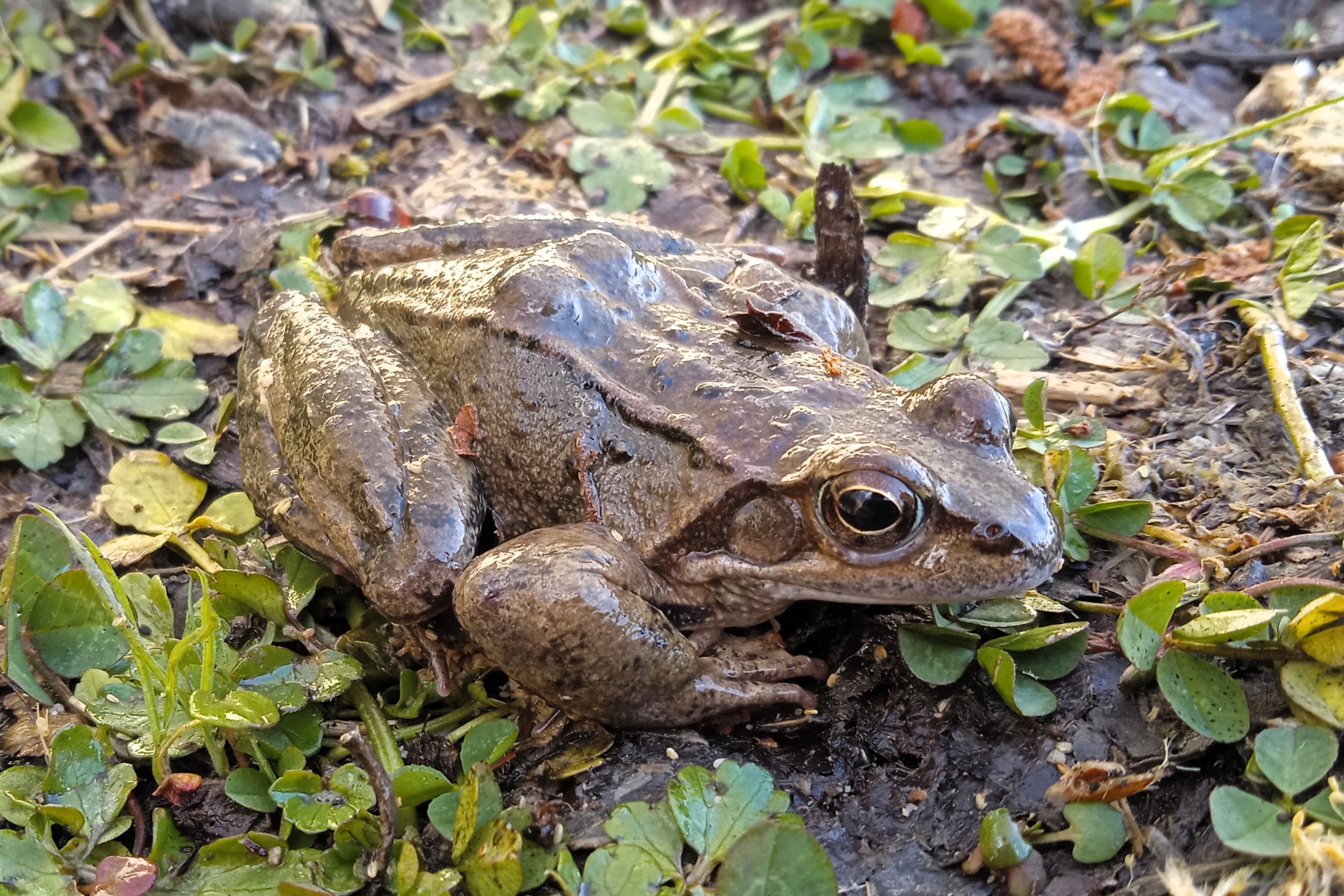

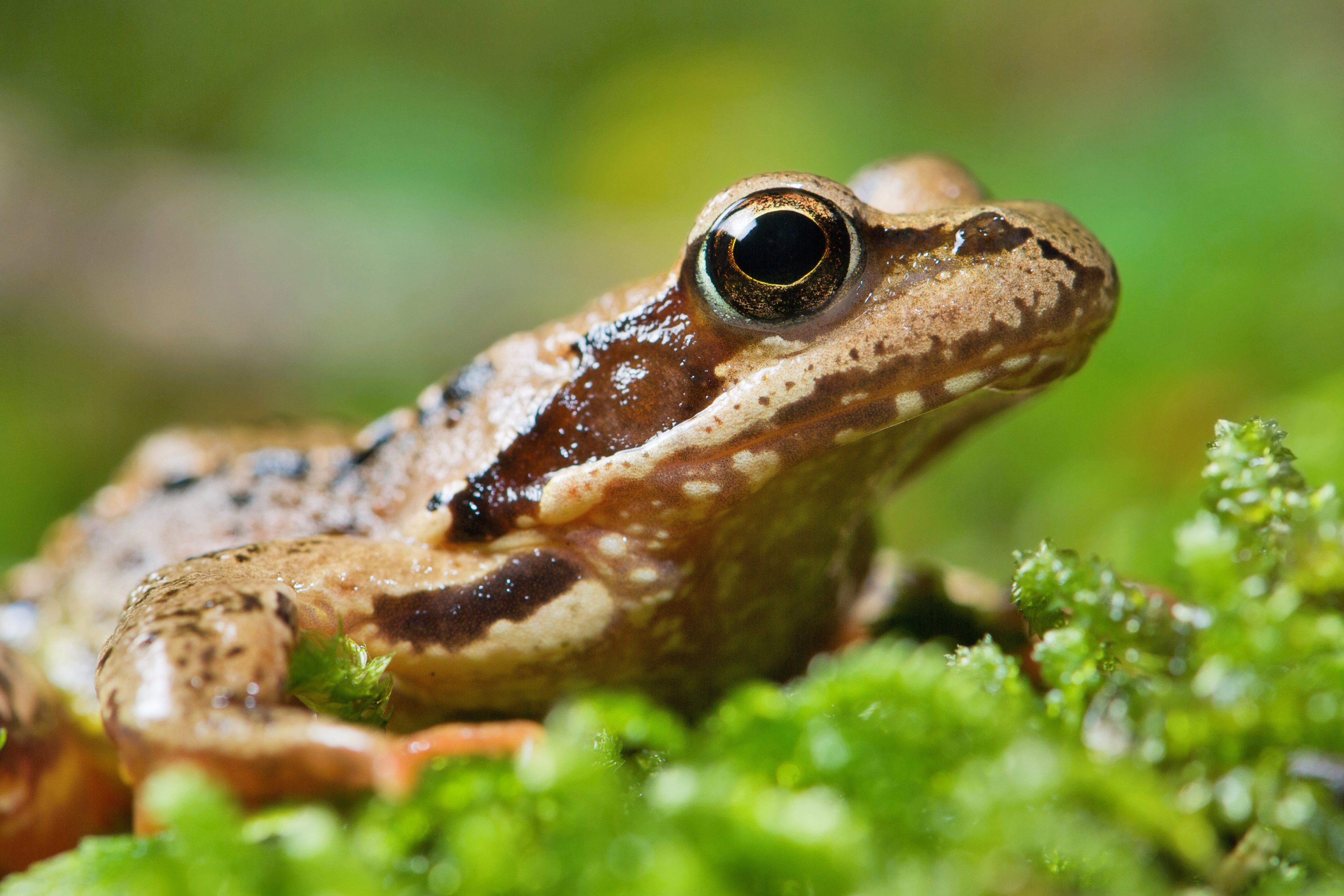
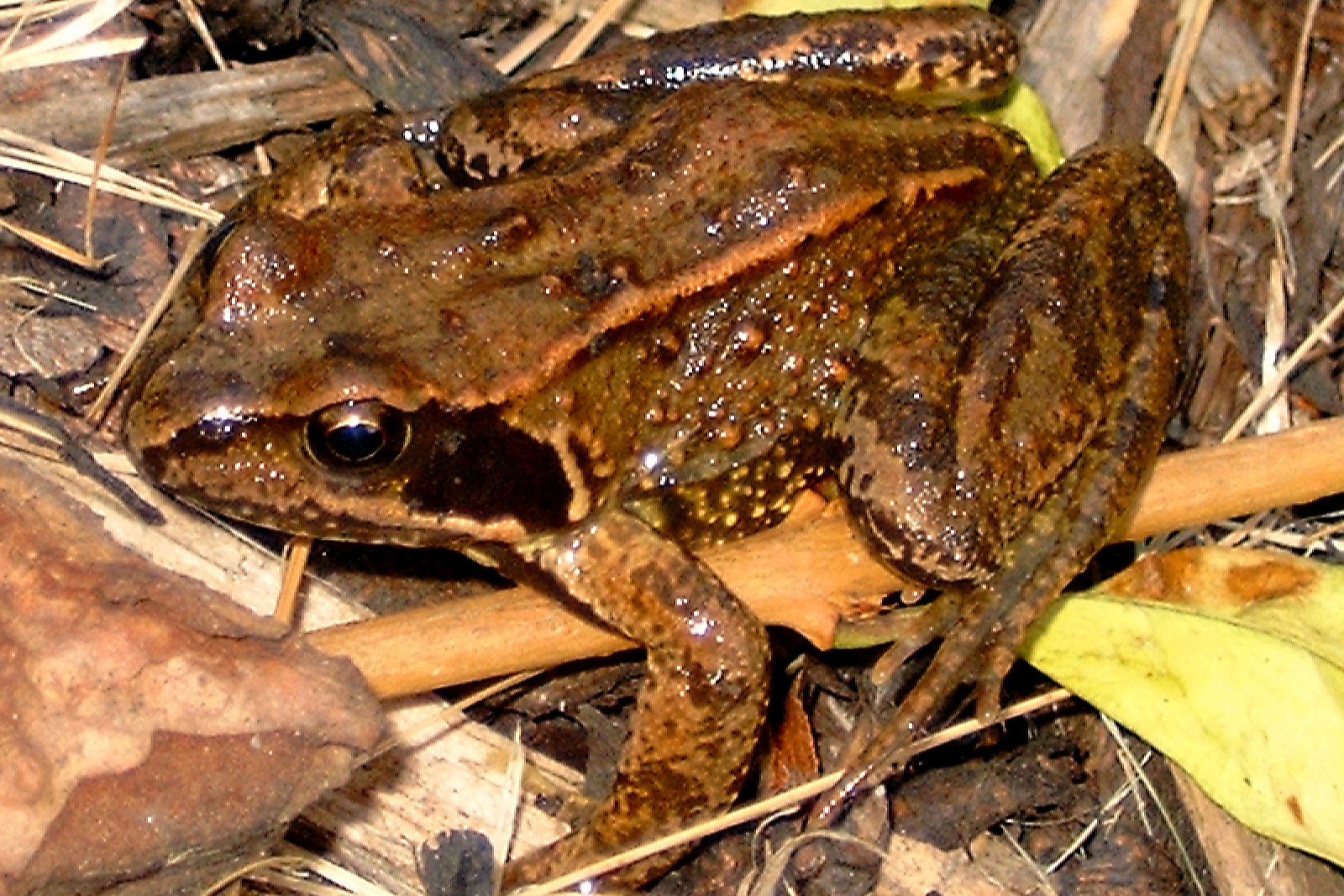
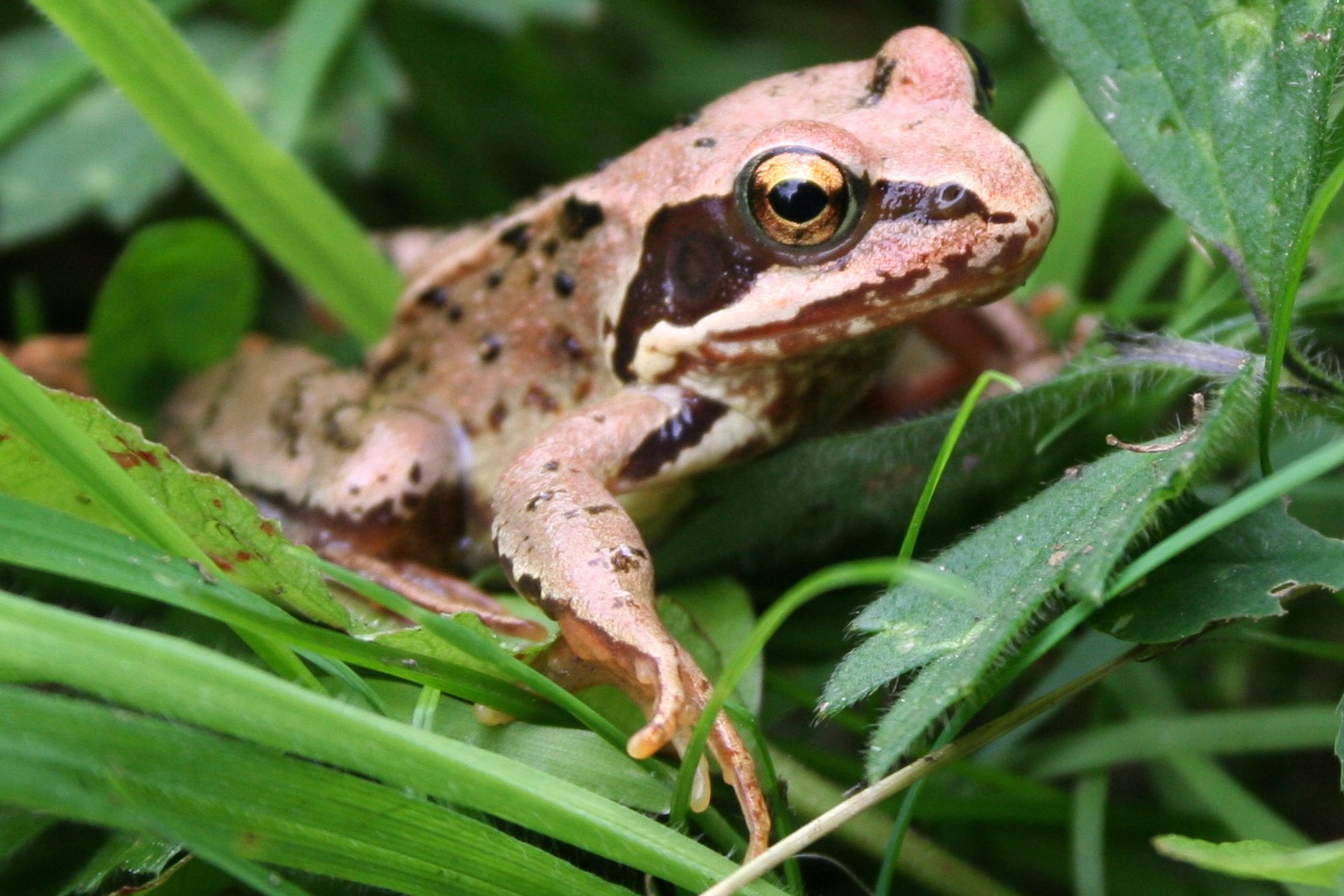
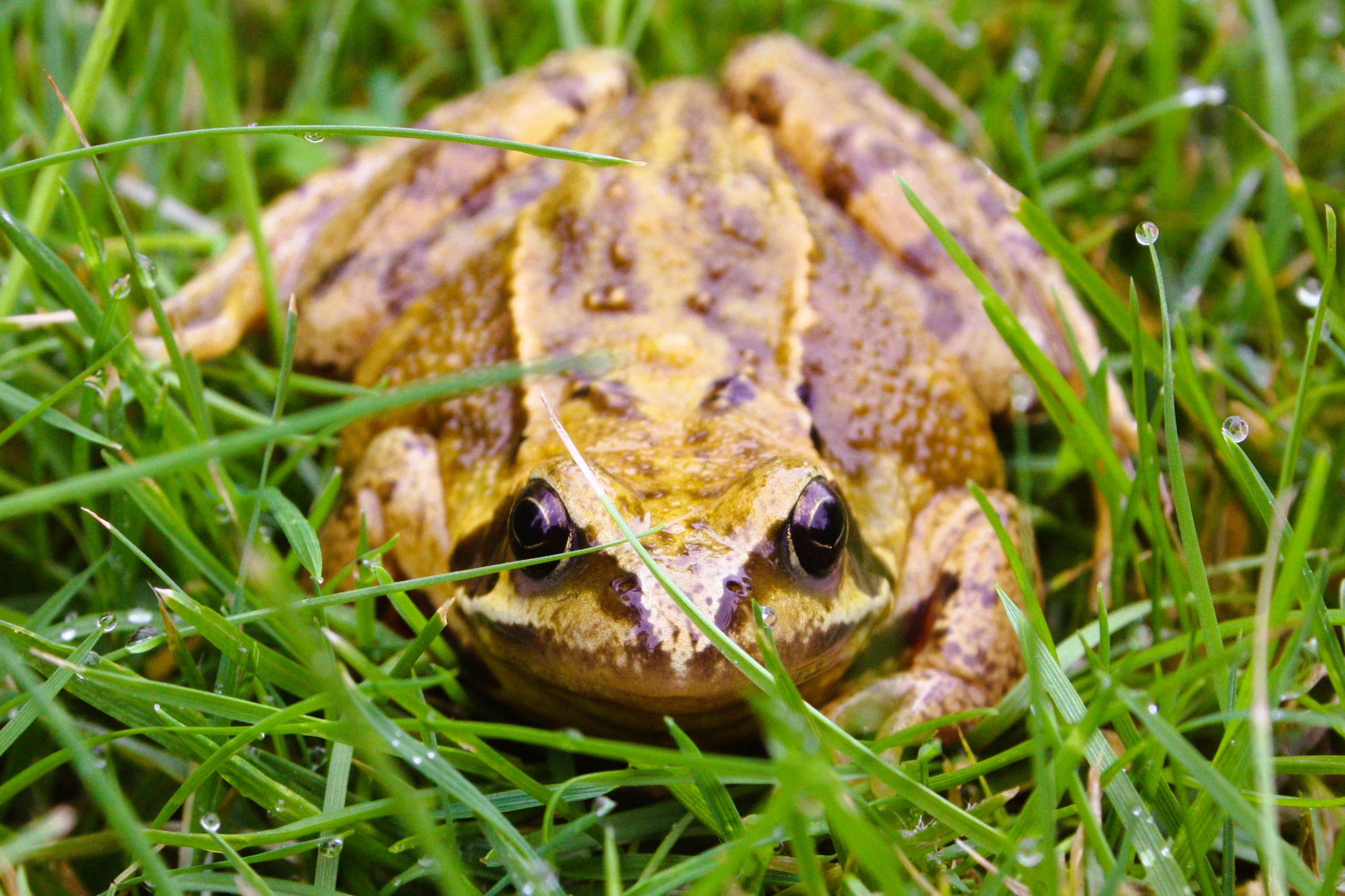
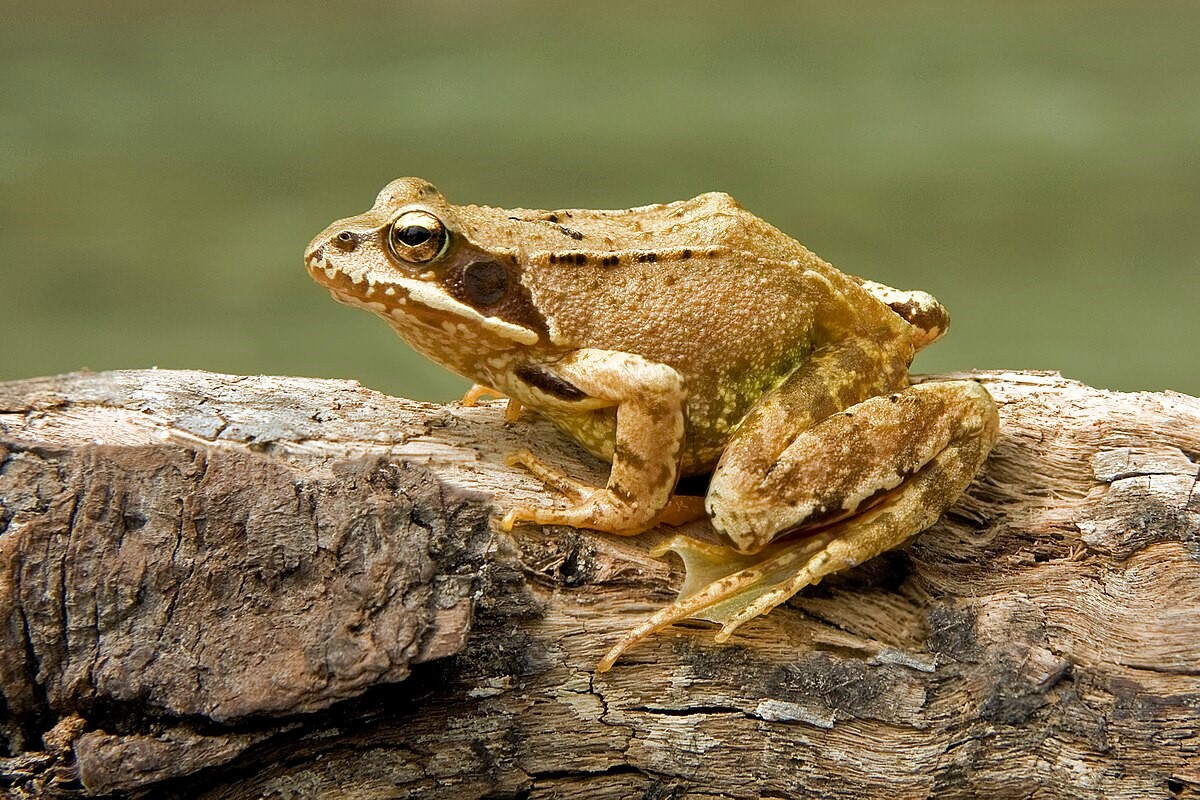
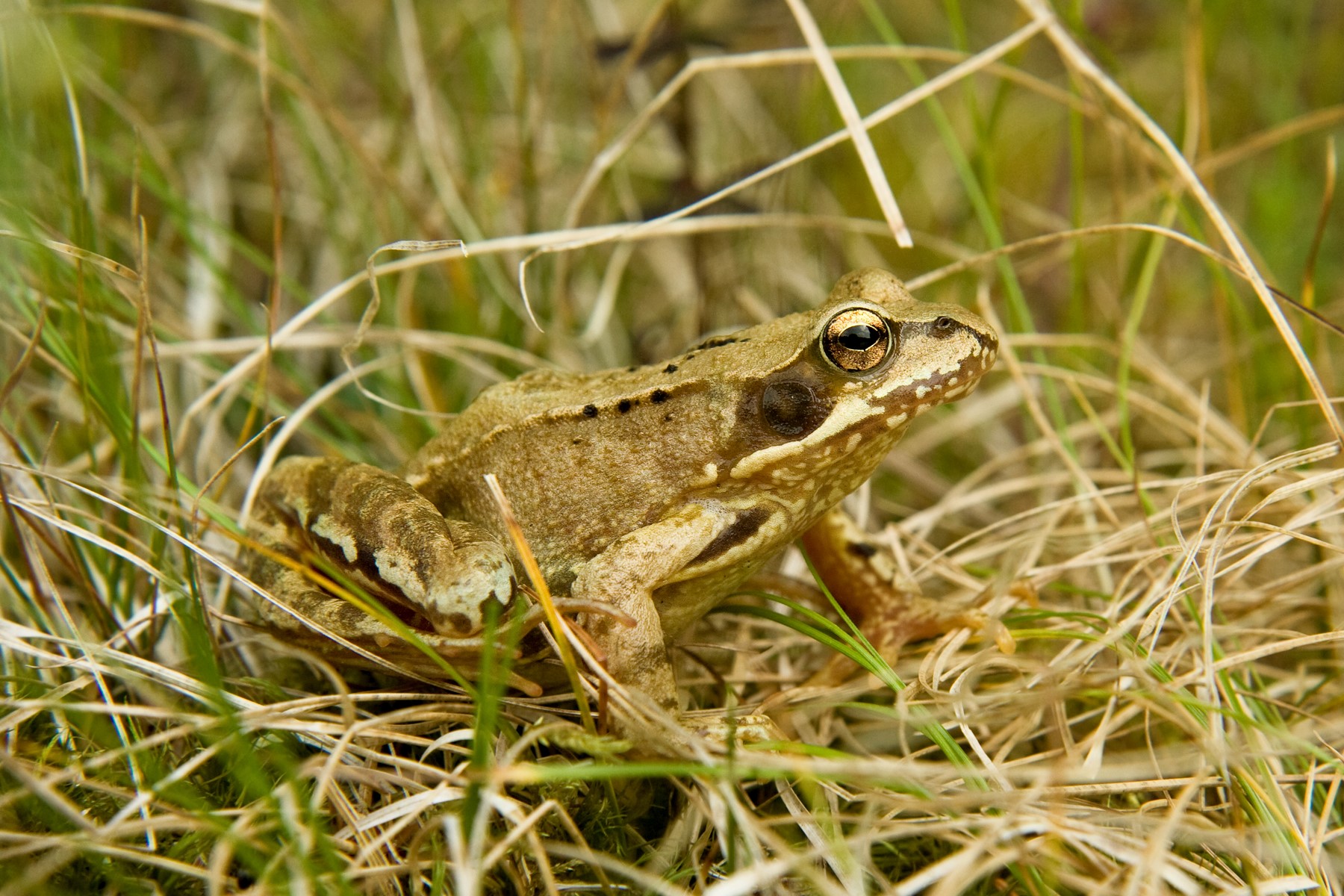
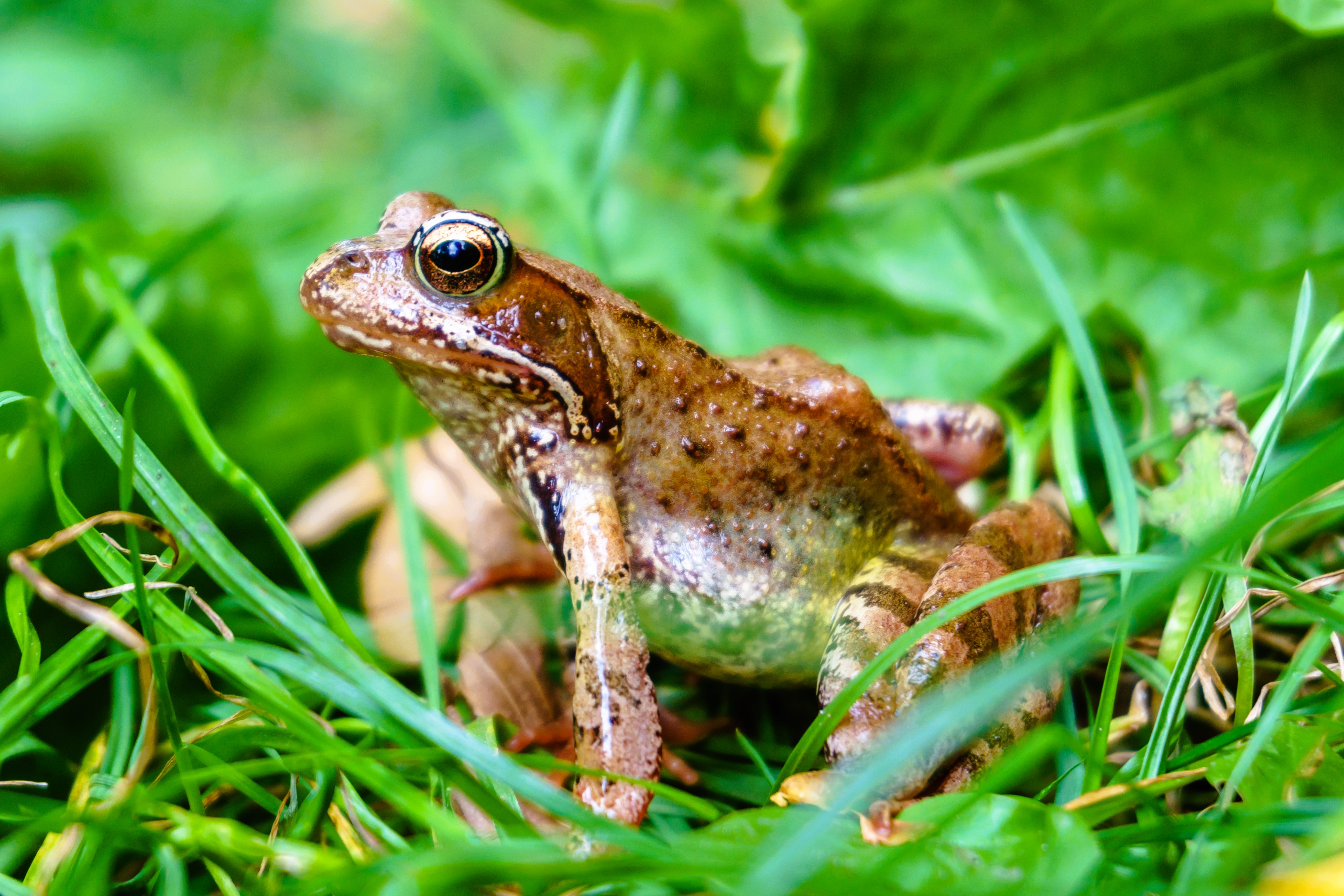
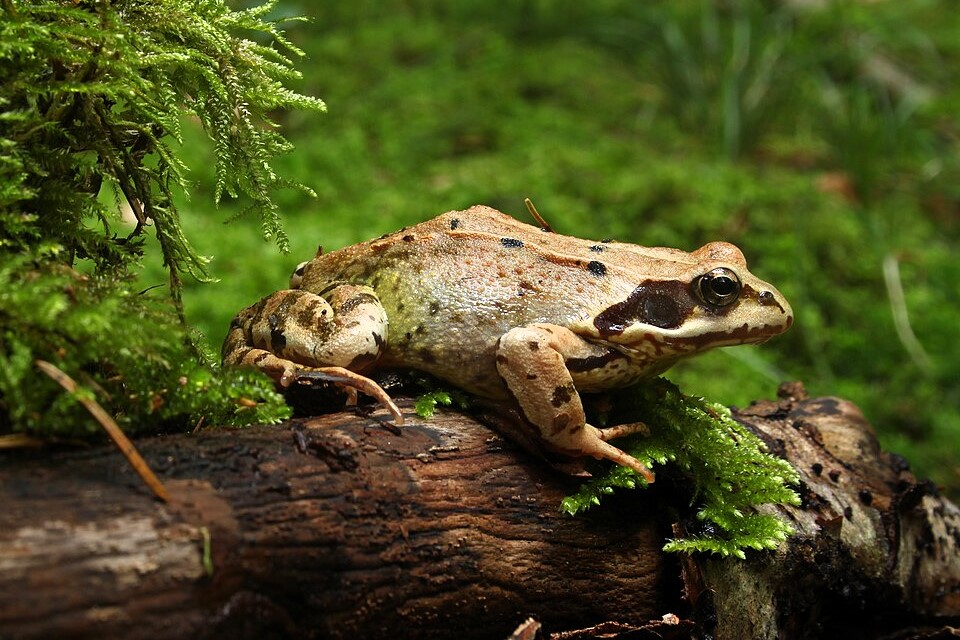
Amphibia → Anura → Ranidae → Rana → Rana temporaria
Rana rusa, Rana de muntagna
The Common Frog ( Rana temporaria ) is one of the most representative amphibian species in the high-altitude environments of western Liguria.
It is recognized by its robust morphology and coloration, which ranges from reddish-brown to dark brown, sometimes with coppery hues; on the back stand out irregular darker patches, while the belly appears lighter and more uniform.
A distinctive feature is the dark mask crossing the eye, giving its a striking appearance.
Sizes range from 2.4 to 3 in (6 to 7.5 cm) in males and can exceed 3.1 in (8 cm) in the largest females, who are on average 2.8–3.5 in (7–9 cm).
Sexual dimorphism becomes notable during the reproductive period: males develop dark nuptial pads on the thumbs and have stronger forelimbs and a lighter throat; females are generally more robust.
At birth, tadpoles of about 0.24–0.28 in (6–7 mm) appear black and transform into small metamorphosed specimens over several months.
In western Liguria and along the Alpine axis of the Ligurian Alps, the Common Frog is continuously distributed in mountain and submountain areas, mainly between 2,620 and over 6,560 ft (800 and over 2,000 m) elevation.
The largest populations are found in the main mountain valleys – including Valle Arroscia, Alta Valle del Tanaro, and Valle Roja – in well-preserved environments.
Recognized as a relict and specialist species, its presence attests to the environmental quality of alpine and subalpine ecosystems in the province of Savona.
It prefers cool, humid environments characterized by relative climatic stability: alpine and subalpine meadows, mountain forests of broadleaves or conifers, peat bogs, and high-altitude wetlands.
The frog also uses small streams and mountain brooks, as well as temporary pools from melting snow, often essential for reproduction.
The species shows remarkable ability to exploit a variety of microhabitats, as long as clean water is available in the breeding season.
The activity of the Common Frog is mainly diurnal and crepuscular, but in favorable conditions may also continue at night.
It follows an annual cycle closely linked to the alpine climate: the winter dormancy phase can last from October to April, especially at higher elevations, when individuals seek shelter deep among submerged vegetation or in mud in frozen water bodies.
This species distinguishes itself by being one of the first to become active in spring, with breeding often starting just after the thaw (March–May).
Females lay 1,000–4,000 eggs in large gelatinous masses that float in calmer, sunnier parts of the water; metamorphosis is usually completed between June and September, with longer times at higher altitudes.
Adults have a rather varied diet, composed mainly of terrestrial insects, spiders, snails, earthworms, and other small invertebrates, which are hunted both on the shore and near water.
Tadpoles are mainly herbivorous and microphagous, feeding primarily on algae, plant detritus, and tiny aquatic invertebrates.
Diet diversification reflects seasonal changes and food availability at different altitudes.
The main threats facing the Common Frog in western Liguria involve climate change—which significantly alters snowfall patterns and water availability—and modifications of high-altitude water regimes, often due to water abstraction or tourism management.
The introduction of predatory fish in alpine lakes, the spread of emerging fungal diseases, alteration of breeding habitats, and population isolation are further risk factors.
Anthropogenic disturbance, related to tourism in mountain areas, can also have negative effects, particularly on the most vulnerable breeding sites.
Future protection of the species depends on safeguarding high-altitude wetlands and maintaining ecological connectivity among populations.
Particular attention should be dedicated to the sustainable management of alpine lakes and regulation of recreational activities during the most sensitive periods of the year.
The Common Frog stands out for being one of the amphibian species that reaches the highest altitudes in the Alps and for its extraordinary ability to survive long periods of intense cold, thanks to peculiar physiological adaptations.
It can breed in nearly freezing waters immediately after the snow melts, showing absolute fidelity to habitual breeding sites.
In western Liguria it is carefully monitored to assess the effects of global warming on high-altitude populations, thus representing an important indicator of mountain ecosystem health.